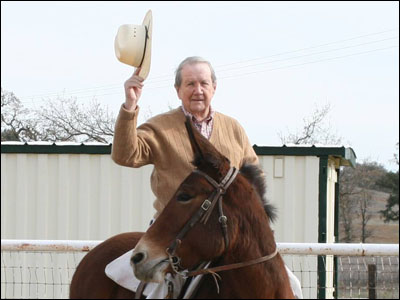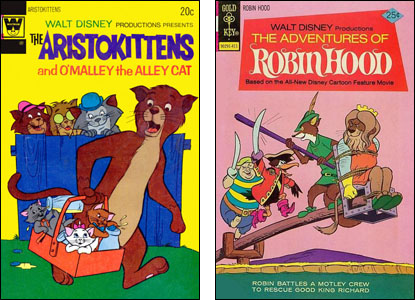
One of the most prolific comic book artists of all time, Richard T. Moore died in his sleep September 7 at his home in Templeton, California. Known professionally as Sparky Moore, he worked in comics, comic strips and animation from 1951 until shortly before his death at the age of 91. "Sparky" was also the nickname of Charles Schulz of Peanuts fame but unlike Schulz, who got his handle because of Sparkplug, the horse in the Barney Google newspaper strip, Moore became "Sparky" because he was a radio operator in the military.
Sparky Moore was born in Philadelphia in 1925. As a kid, he had two passions: Drawing and horses. He raised and bred horses for much of his adult life while drawing in a nearby stable. Sometimes, he combined his two interests. He drew hundreds of western comic books and he also carved intricate wooden rocking horses. Soon after serving in World War II, Moore met and married Helen Sheedy and they had a family that included one set of twin boys and one set of twin girls. They were married until her death in 2005.
Moore's professional art career began in the late forties but really took off in 1951 when he began drawing for Western Publishing Company, producing work that appeared in Dell Comics and also in Western's activity books, childrens books, puzzles and toys. He was extremely versatile, able to adopt an adventure style to draw movies and TV tie-in comics or characters like Rin Tin Tin, Lassie or Tarzan, or to switch and do funny animals and Disney characters. In his later years, he did mainly the latter. For Western's Gold Key and Whitman lines, he drew Disney's Robin Hood, The Aristokittens, Scamp and Winnie the Pooh, among others. For Disney studios, he did long stints on the Scamp and Winnie the Pooh newspaper strips.

During the sixties, he worked often in animation for Grantray-Lawrence on the Marvel Super Heroes cartoons, and for Hanna-Barbera on shows like Jonny Quest, Mightor and Space Ghost. He also drew comic books of the H-B super-heroes for Gold Key. He was very good at drawing in other artists' styles and I have seen Sparky Moore animation drawings for the Marvel show sold and represented as the work of Gene Colan, and drawings Moore did for Hanna-Barbera sold as Alex Toth's work.
For the most part, he was anonymous but very good…and very reliable. At Grantray-Lawrence, he met a young artist named Mike Royer and he gave Mike some of his first work in comic books and one vital piece of advice. I just phoned Mike for background and he told me, "The best piece of advice I ever got as an artist came from Sparky. He said, 'You get your first job based on your ability and all the rest based on your dependability.'"
Mike added, "Whatever success I've had professionally as an artist…I owe a lot of that to Sparky Moore."
I was a fan of Sparky Moore's art long before I could put a name to that style. He drew a lot of comics based on TV westerns for Dell in the late fifties, including Elfego Baca, Wyatt Earp, Texas John Slaughter and Rex Allen. For a change of tone, he also drew The Three Stooges and many of the Disney movie adaptations for the company. When I was in a position years later to hire artists for comic books, I kept trying to get him but he always declined gratefully, citing a full plate of other assignments. He was well-liked by editors for delivering superior work on time and by his colleagues for helping other artists. Royer said, "I got an awful lot of work because Sparky recommended me for things and everyone took his recommendations."
Most comic book fans reading this are probably not familiar with his name but if you're anywhere near my age and liked Dell Comics, you read a lot of books he did — and I haven't even gotten into the many times he ghosted books or strips allegedly by other artists to help out a friend. I doubt anyone could even assemble a checklist of his work and make it reasonably complete. But he was real good at what he did and he sure did a lot of it.